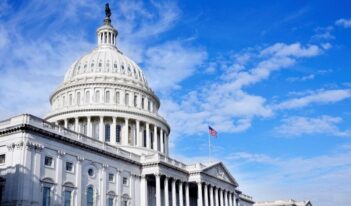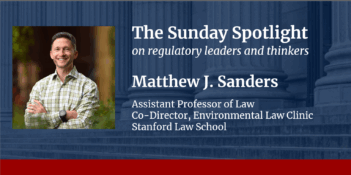
When does requiring companies to reveal their pollution affect their behavior?
Chain restaurants in New York City are required to post calories on their menu boards, a movement that is spreading nationwide. In California, restaurants must post health inspection grades at their front door to alert potential customers. Packaged food sold in California might soon have to label whether ingredients are genetically modified, depending on the fate of a November ballot measure. What do these regulations have in common? Each is a form of information disclosure regulation, meant to improve society by harnessing market forces.
Information disclosure regulations are a popular tool for environmental and health matters, and have been referred to as the “third wave” of environmental regulation, following command-and-control approaches that require particular pollution control equipment and market-based instruments such as pollution taxes and cap-and-trade. Environmental information disclosure regulations are meant to reduce pollution by igniting stakeholder pressures to change polluters’ behaviors—while minimizing enforcement costs and providing companies with the flexibility they covet.
The U.S. Toxics Release Inventory (TRI), launched in 1988, is the most famous example of information disclosure regulation. Harnessing the right-to-know movement and public safety concerns following an explosion at a chemical plant in Bhopal, India, that killed hundreds of neighboring residents, Congress required factories across the U.S. to disclose publicly their toxic chemical emissions every year. The intent was to provide information to neighbors, consumers, and environmental activists about the toxic chemicals that factories emit to the air, water, and soil, all within a central TRI database.
While many supporters of information mandates claim that they are effective and efficient forms of regulation, there is little systematic analysis of whether they actually work. Take the TRI, for example. While there is evidence that pollution levels can influence the behavior of stakeholders such as homebuyers, little is known about whether the TRI achieves its ultimate policy objective of changing polluters’ behavior.
Together with Anil Doshi of Harvard University, we investigated this question empirically. By exploiting a natural experiment—a change in the regulation that expanded the number of chemicals required to be reported—we sought to discover whether organizational factors affect the degree to which disclosure impacted subsequent pollution performance. We found that a number of key factors appear to affect responsiveness to information disclosure.
First, we found that establishments located near their headquarters outperformed those situated further away in terms of their trends of toxic chemical pollution. We also found better performance among establishments located near their corporate siblings, especially those in the same industry. These results suggest that access to expertise from headquarters or sibling facilities—and particular sensitivity to reputations in places where companies have multiple facilities—may lead these companies to respond more aggressively to mandatory disclosure by curtailing pollution once such information has entered the public domain.
Second, we found that establishment size matters. Larger establishments exhibited worse pollution trends following disclosure mandates than smaller establishments when there were few other establishments nearby, but we found no difference between large and small establishments in areas of greater establishment density. This finding suggests that large firms can resist stakeholder pressures in regions where they are a dominant player, a market power story.
Finally, we found that privately held establishments outperformed establishments owned by publicly traded companies. This result is consistent with claims that public firms are more focused on generating short-term returns to maintain attractive share prices, whereas private firms are more willing to invest in longer-term investments, and therefore may be more likely to pursue non-financial objectives like curtailing pollution.
Overall, our findings have important implications for policymakers and regulators, who can leverage these results to anticipate better which types of establishments are likely to be responsive to disclosure mandates. Establishments less likely to respond to information mandates—whether establishments isolated from their headquarters and corporate siblings or large establishments in rural areas—might need additional incentives or resources to stimulate improved performance.
The U.S. Environmental Protection Agency (EPA) has recently required thousands of establishments across the United States to disclose their greenhouse gas (GHG) emissions, a disclosure regime which was originally created to help EPA prepare for possible cap-and-trade legislation. Many participants at a recent Resources For the Future workshop wondered whether these new facility-level GHG data will prompt some firms to reduce their emissions, as we saw in our empirical study of TRI. But while TRI’s toxic chemicals worry establishments’ neighbors and customers, GHG emissions are a global, not a local, problem—so it’s not clear how the data will pressure establishments to improve. On the other hand, many cities across the U.S. have announced serious plans to reduce GHG, so perhaps carbon-intense facilities will face local pressures.
Meanwhile, researchers will remain poised to find out what has worked, and what has not, to inform the making of better regulations in the future.
This essay draws from the authors’ forthcoming article with Anil Doshi, “How Firms Respond to Mandatory Information Disclosure,” in the Strategic Management Journal.





